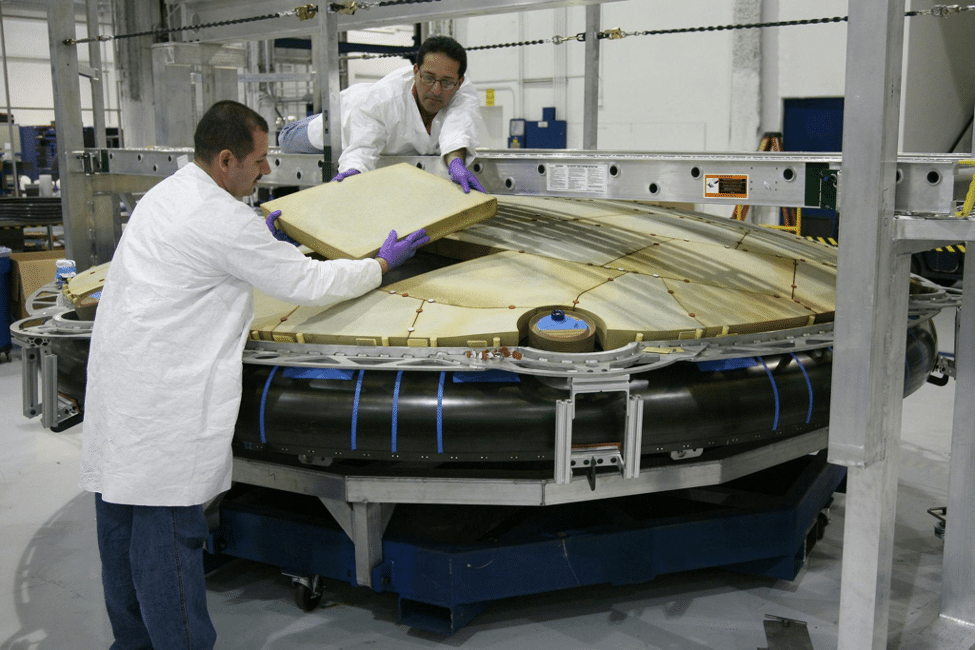A new generation of startups is gaining traction across the aerospace and renewable energy sectors. Founders and engineering teams are under pressure to deliver technologies that meet aggressive performance targets while aligning with sustainability expectations and operational demands. This pressure requires design strategies that extend beyond innovation itself.
Industrial design is rife with innovation, both in technology and logistics. By looking at how the sector has changed and responded to new technology, there is much that aerospace can learn. Let’s explore how integrating industrial design into early-stage decisions can shape scalable, reliable systems from the ground up.
Why Aerospace and Energy Startups Need To Think About Ground-Level Design
Success in high-performance sectors begins with how work moves through the physical environment. Manufacturing floors, research labs, and testing facilities all depend on equipment that can shift, adapt, and transport safely. Casters play a fundamental role in that movement. Their integration into aerospace and energy workspaces supports safe handling, efficient assembly, and mobility for everything from heavy components to modular tooling.
On aerospace manufacturing floors, where tight tolerances and oversized parts are common, high-capacity casters make it possible to transport equipment without sacrificing stability or alignment. The same holds true for energy facilities, where battery modules, solar panels, and large-scale prototypes often require precise maneuvering. These applications highlight the role of aerospace industry casters in supporting ground-level operations, allowing teams to reconfigure layouts, respond to testing needs, and avoid fixed infrastructure limitations.
Casters that reduce downtime, materials that outperform under pressure, and manufacturing that prioritizes precision all contribute to systems that grow efficiently. A well-designed mobility system reduces strain, improves workflow, and protects both workers and components. For startups moving quickly through design cycles, this kind of flexibility can make the difference between stalled production and continuous progress.
Material Innovation as a Competitive Advantage
The right material choices allow new technologies to meet structural demands, regulatory requirements, and long-term durability goals. For aerospace systems, engineered ceramics and specialized glass offer advantages in areas like thermal management, pressure sealing, and weight reduction. These materials are now essential in aerospace components exposed to extreme heat and vibration, and in renewable energy products that must operate under fluctuating environmental conditions.
Ceramic insulators and high-durability glass have become integral to solar infrastructure and battery enclosures in energy innovation. The shift toward lighter, more efficient materials plays a direct role in the evolution of products that can withstand real-world conditions without compromising performance. The influence of innovative materials in renewable energy development shows how advanced material science supports cleaner systems, extended lifespans, and greater adaptability under field conditions.
Startups that align their product strategy with material advances not only reduce production issues but also streamline regulatory approvals and improve environmental outcomes. Material selection is a design decision, but it’s also a competitive one.
Precision Manufacturing for Future-Ready Design
Precision is foundational in aerospace and energy manufacturing. It affects how components fit, how they perform under stress, and how they age over time. Whether working on propulsion assemblies, structural frameworks, or sensor housings, consistent tolerances and exact alignments prevent costly rework and increase confidence during deployment.
Startups that prioritize precision early avoid problems associated with inconsistent output. Accuracy in machining, fabrication, and final assembly helps teams meet safety requirements and build systems that scale predictably. The importance of precision in aerospace manufacturing can be seen in the way startups use strict manufacturing protocols to reduce variability and build trust with stakeholders and partners.
This focus on precision isn’t limited to finished parts. Even the platforms used to move or test components must support repeatable performance. When mobility tools, fixtures, and assembly environments are designed for accuracy, the entire operation benefits from reduced error rates and smoother certification processes.
Sustainable Design That Moves and Scales
Sustainable design depends on decisions made throughout the build process. Lightweight materials lower emissions during transport and deployment. Durable components reduce the need for frequent replacements. Safe, efficient mobility systems protect workers while reducing energy waste during material handling. Each of these elements contributes to a reduced environmental footprint without compromising performance.
Many aerospace and energy startups are adopting a systems-based approach to sustainability, where mobility, assembly, and materials work together to support both environmental and operational goals. In this context, greener design practices among startups are emerging as part of how teams build for scale while remaining mission-aligned. The integration of responsible sourcing, minimal waste fabrication, and recyclable materials reflects a shift toward strategies that support longevity and efficiency.
Environmental responsibility becomes a practical outcome of better design, not a separate initiative. Teams that make these choices early position themselves to meet growing expectations around lifecycle impact, investor scrutiny, and long-term profitability.
Conclusion
Every part of a product reflects choices made at the intersection of design, engineering, and operations. Aerospace and energy startups working to change the future are doing so within highly physical environments, labs, test centers, and shop floors. Those spaces and the tools inside them have to be as resilient and agile as the innovations they support.
When early-stage teams invest in infrastructure that supports performance, every build becomes stronger. That strength doesn’t start at launch or market release. It begins the moment a component rolls onto the shop floor or a material holds its shape through the final test. Built to perform means thinking through the details, because what you build on shapes everything that follows.
